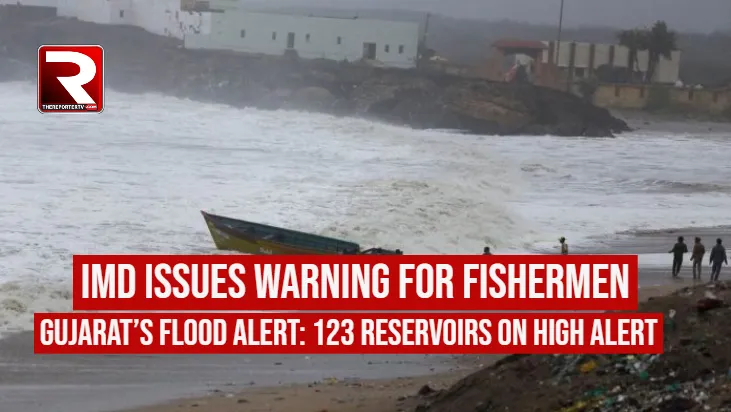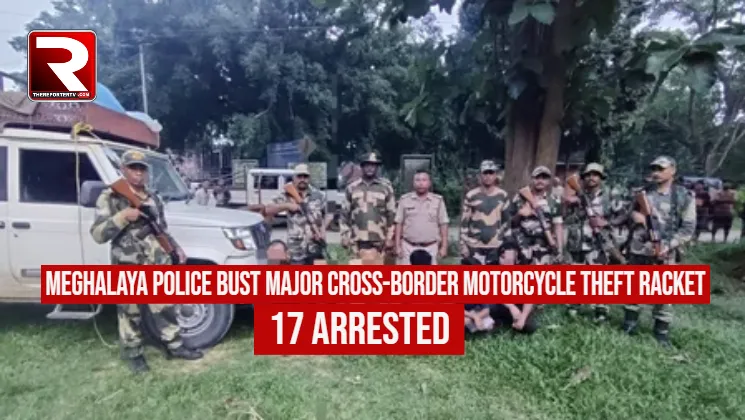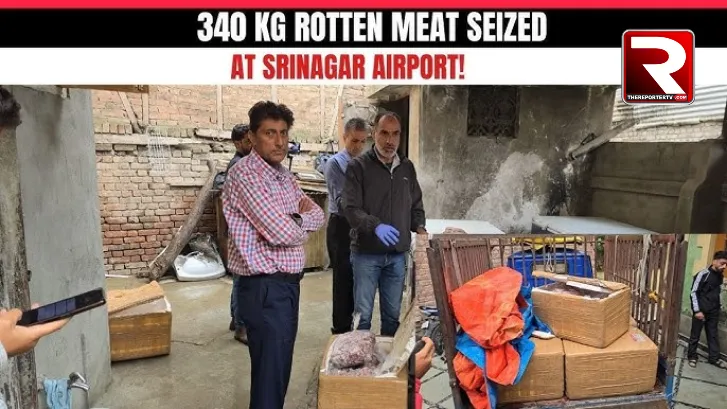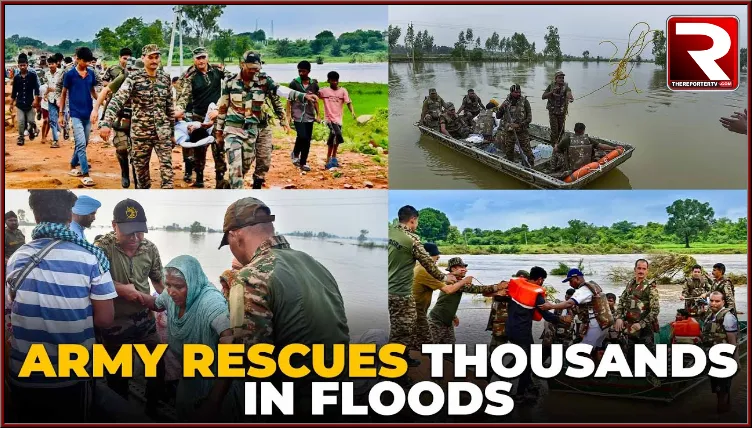Ahmedabad, Gujarat — The India Meteorological Department (IMD) has issued a warning for fishermen, advising them not to venture into the sea between September 7 and 10 due to rough weather conditions and anticipated storms along Gujarat’s coastline.
The weather advisory comes amid heavy rainfall across the state, which has intensified over the past 24 hours. The State Emergency Operations Centre has confirmed that the Sardar Sarovar Dam is currently holding 3,09,048 million cubic feet (mcft) of water, approximately 91.26% of its total capacity. In light of these conditions, the state’s reservoirs are under close watch.
As of now, out of 206 reservoirs across Gujarat, 123 are on high alert, 20 are on general alert, and 14 are at warning levels. Overall, the state’s reservoirs are holding 46,7920 mcft of water, equating to around 83.87% of the total storage capacity.
Rescue Operations Continue Amid Widespread Rainfall
In response to the rising water levels and flood-like situations, authorities have intensified relief and rescue efforts. Since the start of the monsoon on June 1, nearly 5,598 people have been shifted to safer locations, while 1,045 individuals have been rescued. Presently, 12 National Disaster Response Force (NDRF) teams and 22 State Disaster Response Force (SDRF) teams are deployed across various districts, assisting with ongoing operations.
The state has been grappling with erratic rainfall patterns throughout the 2025 monsoon season. While Gujarat saw an early surge of rains in June, the distribution of rainfall has been uneven. June was recorded as the wettest month in a decade, with South Gujarat and parts of Saurashtra receiving nearly one-third of their seasonal rainfall in just 20 days. By mid-July, rainfall had reached 51-54% of the seasonal average, with significant regional disparities, particularly in Kutch, which received about 60% of its rainfall quota, while North Gujarat lagged behind at under 50%.
Heavy Rains and Reservoir Management Challenges
By August, the state had accumulated over 64% of its seasonal rainfall, with some regions like Devbhoomi Dwarka experiencing extraordinary surpluses of over 2,000 mm—135% above normal. However, other districts like Gir Somnath and Amreli in Saurashtra have experienced rain shortfalls of 20-59% below their normal levels.
Entering September, Gujarat has surpassed 90% of its seasonal rainfall target, with South Gujarat achieving a remarkable 94%. Forecasts predict above-normal rainfall in the state for the month, with the overall rainfall expected to reach 109% of the Long Period Average (LPA).
This mixed pattern of extreme rainfall—flood-like conditions in some areas and dry spells in others—has posed challenges for agriculture and dam management. The uneven distribution of rainfall has created both opportunities and risks for water storage, particularly as authorities balance reservoir levels with the potential for further rainfall.
Ongoing Challenges for Agriculture and Water Management
As the state moves further into September, managing the excess water in reservoirs while addressing the challenges posed by flood-prone regions and rainfall deficits remains a delicate balancing act. The heavy rains are particularly impacting agriculture in deficit-prone areas, complicating the already difficult task of crop management.
While the rains have brought much-needed water to Gujarat’s reservoirs, which are essential for irrigation and drinking water supply, they have also led to concerns over crop damage, particularly in areas that have not received enough rainfall. With forecasts predicting more rain in the coming days, local authorities continue to monitor flood situations and provide support to the affected districts.
In conclusion, Gujarat’s 2025 monsoon season has been marked by significant extremes, posing both opportunities for water storage and challenges for flood control, agriculture, and dam management. The state government’s prompt response, including the deployment of rescue teams and continuous monitoring of reservoir levels, is crucial as Gujarat navigates through another unpredictable monsoon.











